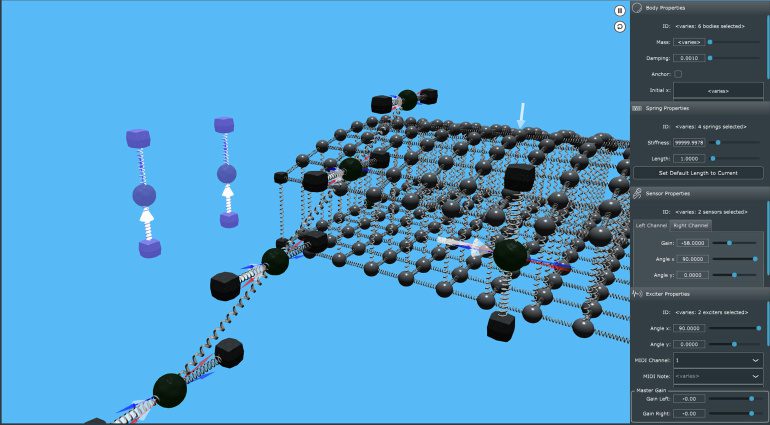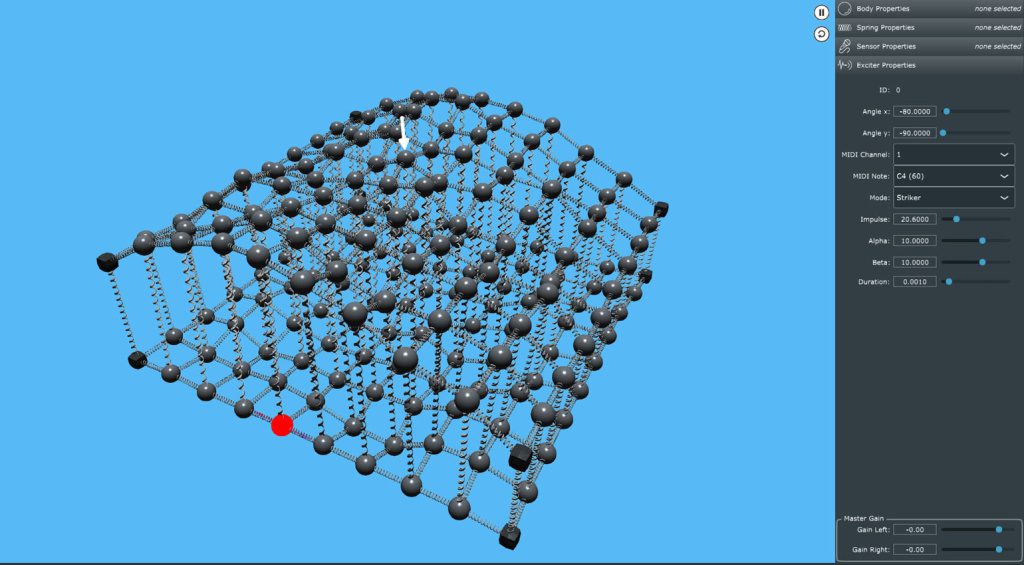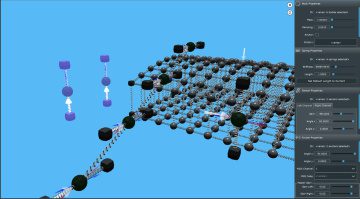Anukari Synthesizer: Sound through the laws of physics
The physics-based Anukari is all about generating sound from interconnected masses and springs held in three-dimensional space and then giving them a good whack.
Anukari
Evan Mezeske of Anukari Music has unveiled an early prototype of a software synthesis engine based on the interaction of masses and springs. It’s a lot like physical modelling but where you are building a network of vibrations that you directly engage with. This could be a very interesting journey into sound design.
The interface is pretty rudimentary at this stage, but it does demonstrate what’s going on. The basic idea is that you have a three dimension space into which you place a pair of fixed points. Between those points, you connect a ball stretched between a pair of springs. Twang the ball, and it will vibrate exactly as you expect it to. From a side panel, you have control over every physical aspect of what you’re seeing. You can control spring tension, length, dampening, the ball’s mass and how hard it was struck or how far it was pulled. With the right settings, you can generate musical notes, percussive tones or sympathetic vibrations that respond to incoming audio.
A single ball bouncing between two points is just the beginning. From there, you can build whole networks of springs and masses for complex interplays and unexpected outcomes. Within the 3D space, you can design whatever you want, drag the shapes around and experiment with how it responds to stimuli.
Interact
Playful interaction is definitely at the heart of Anukari. At the moment, MIDI can be used to generate strikes against the masses. Evan intends to expand on this to simulate bowing action, wind resonance and internal oscillators. You also have control over microphone placement and the direction of attack. Alternatively, you can use the networks for effects such as spring reverb on incoming audio
The results are intriguing, and it undoubtedly has bags of potential for organic sound design. It could get very complex very fast, and I imagine it will need some way of controlling multiple systems without having to edit each mass individually.
There’s no release date yet, but it’s planned to be both standalone and VST compatible. It will need a decent graphics card to handle the processing. Evan says that on a relatively modern Windows PC, it could handle up to 750 connected masses in real time at 48kHz.
- Anukari Music website.
You are currently viewing a placeholder content from YouTube. To access the actual content, click the button below. Please note that doing so will share data with third-party providers.

 4,5 / 5,0 |
4,5 / 5,0 | 









